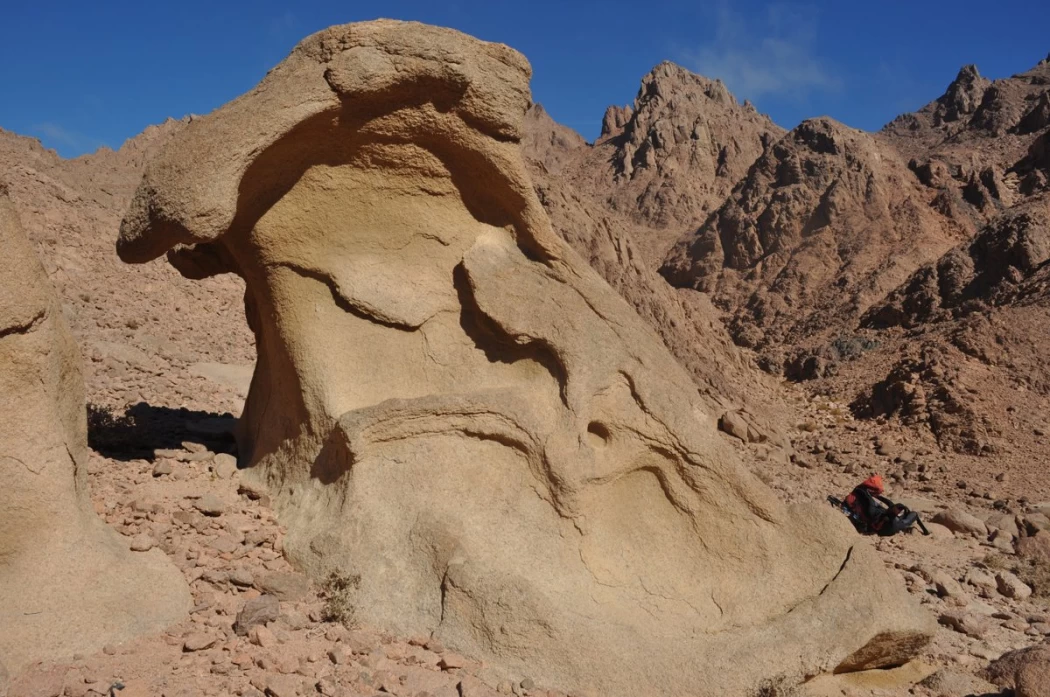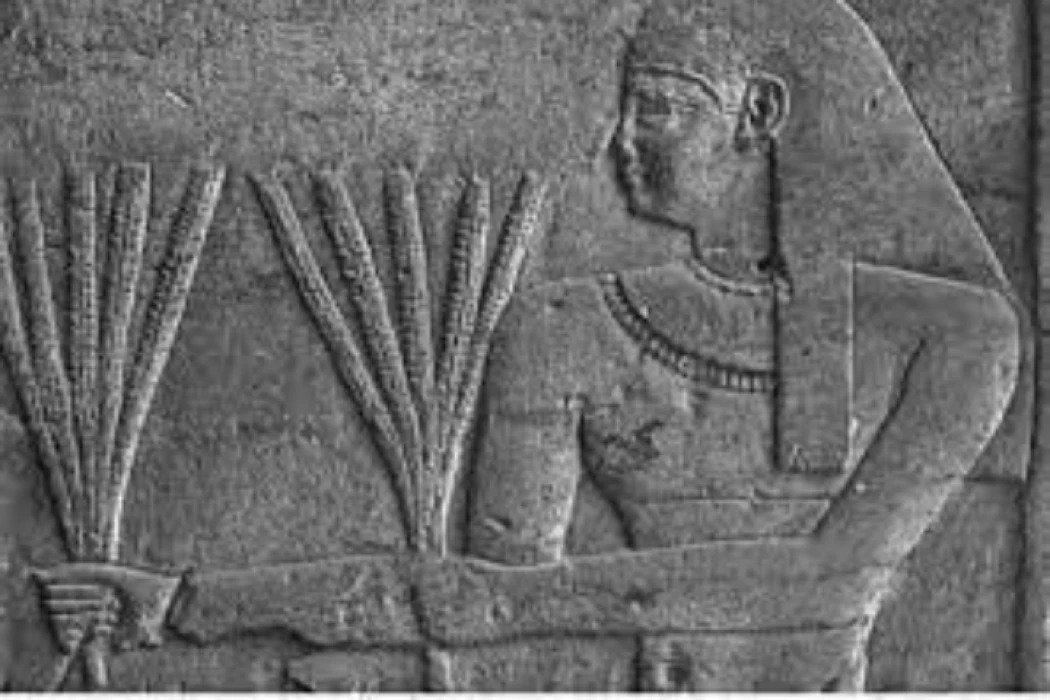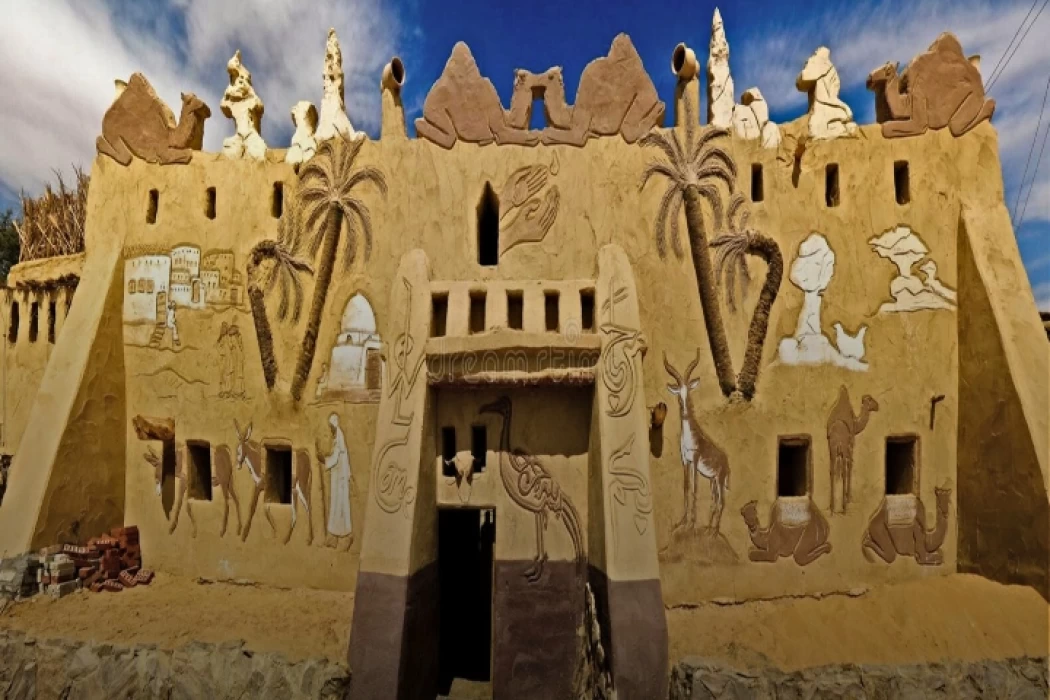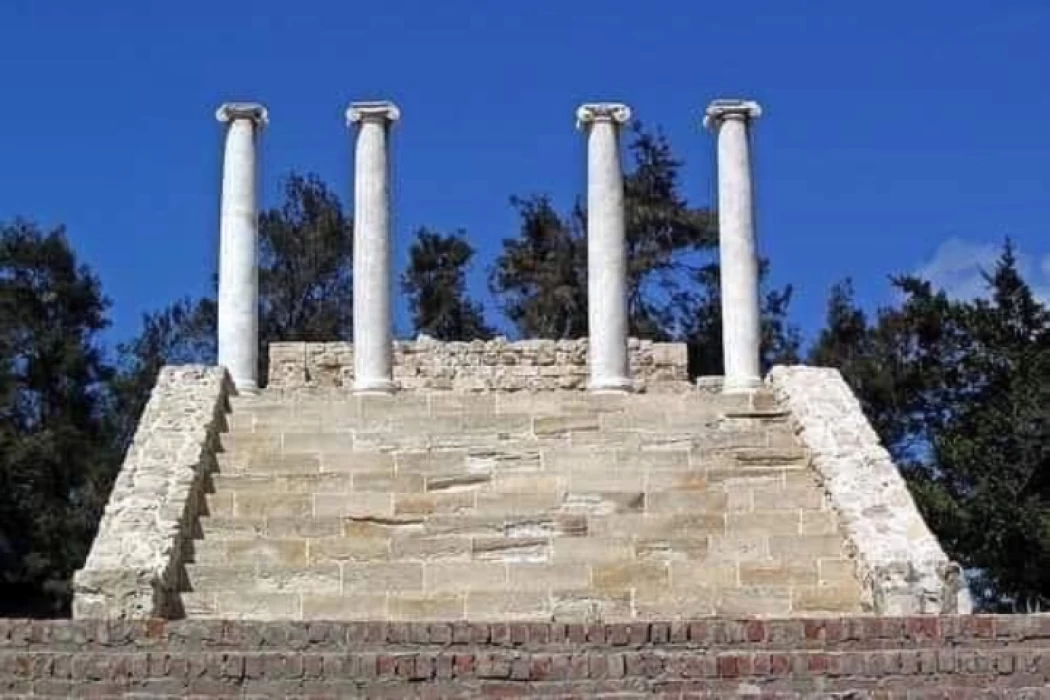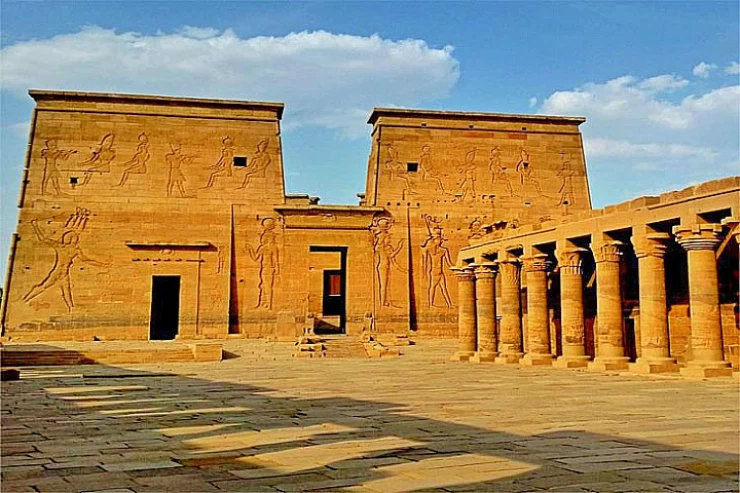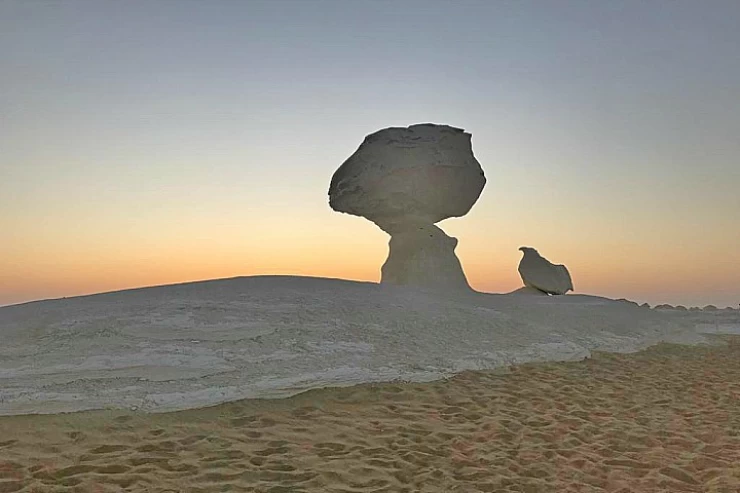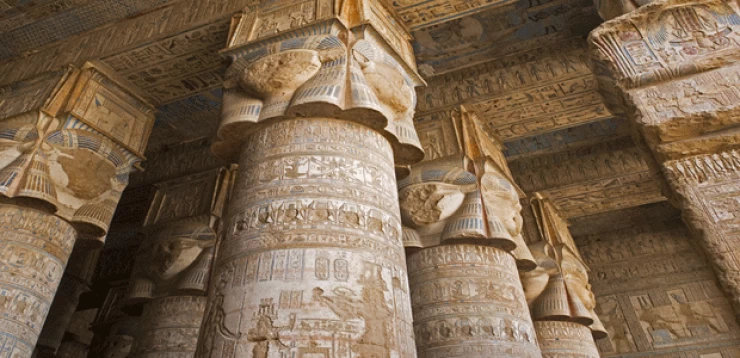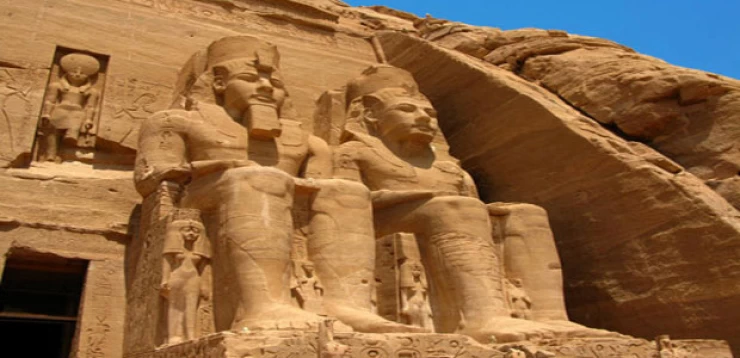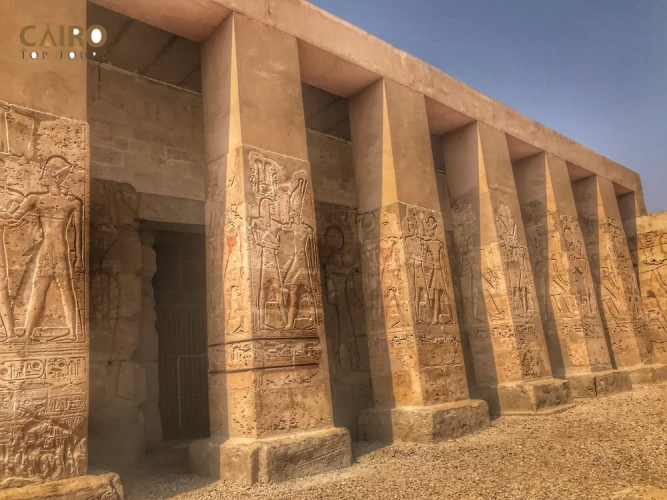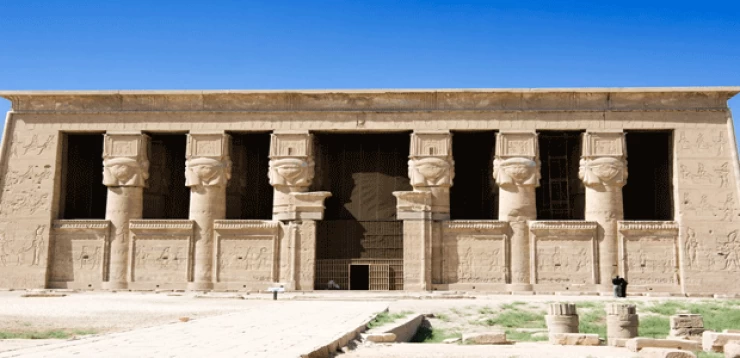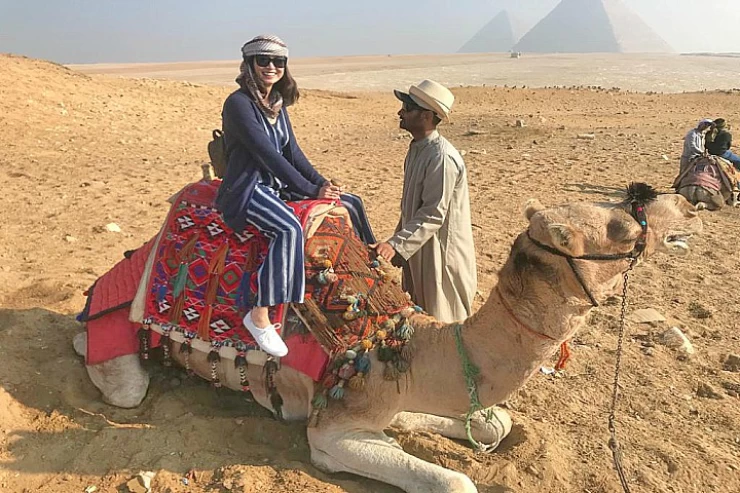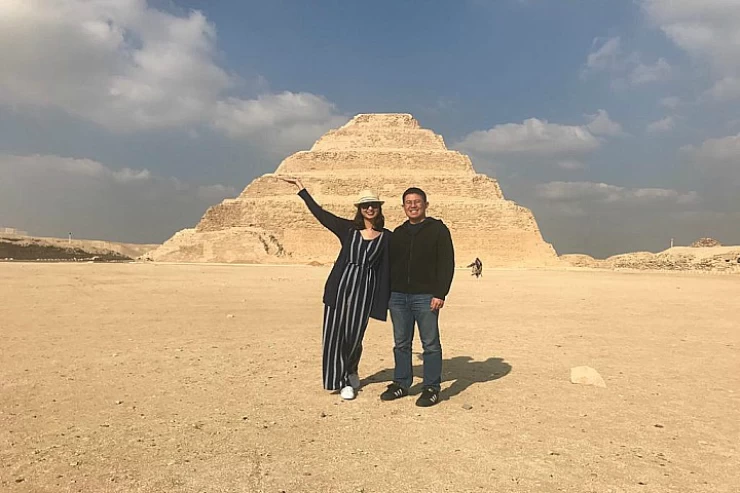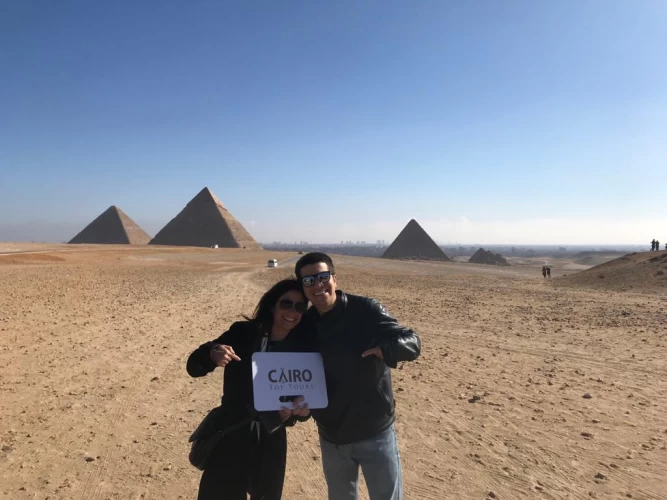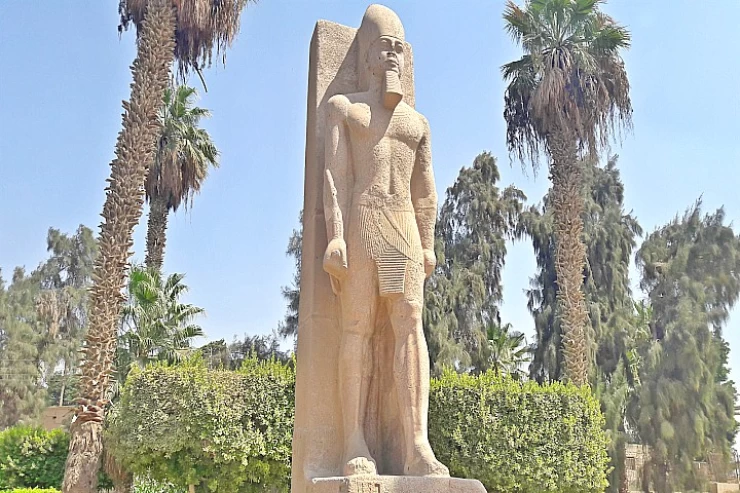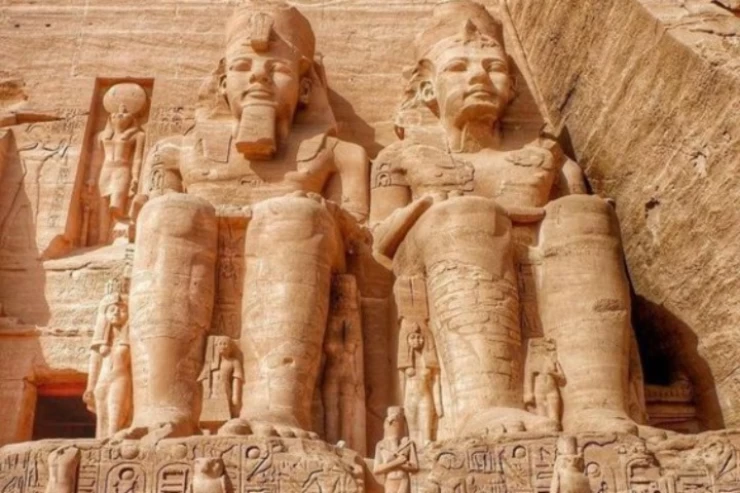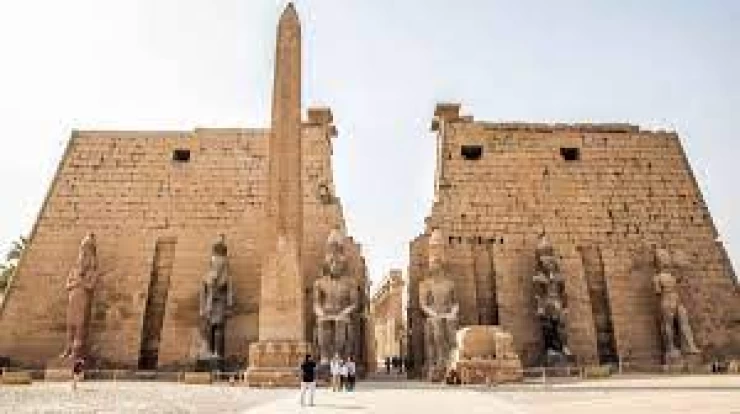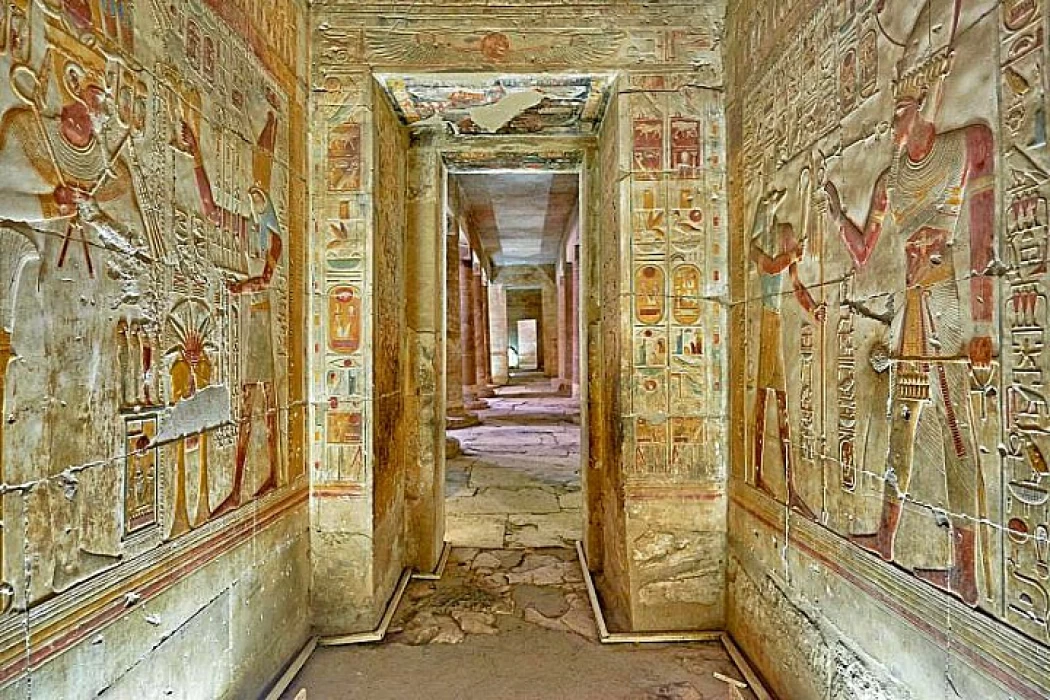
History of Abydos Temple of Osiris
Abydos is a city in the west of the Sohag Plain and was one of the ancient cities of Upper Egypt. Most archaeologists group it as the first capital of Egypt at the end of the pre-dynastic era and the first four dynasties, dating back 5 thousand years. It is located between Assiut and Luxor, near Qena. Currently, it is called The Buried Godmother of Blina, and it is about 11 kilometers away from the Nile. It has the temple of Seti I and the temple of Ramses II, which are characterized by prominent ancient Egyptian inscriptions. And this city was the main center of worship of the god Osiris. The ancient Egyptians made pilgrimages to her to cry the god Osiris, The Guardian of eternal life and the God of the West. The oldest boats in history were discovered in the ancient tombs to the west of the temple of Seti I, the father of Ramses II, the founder of the nineteenth Egyptian dynasty, which was famous for naming many of its kings until Ramses 11 after the name of the founder of the family.
This village is characterized by a lot of monuments, as its former name was the buried godmother because all the monuments were under the sand. And not so long ago a significant part of them was rediscovered, and much remains under research and study.
It's amazing when you are inside the temple it takes you to the distant past where the ancient life and the greatness of the ancestors stand contemplating this greatness and time quickly takes you away".
The pre-dynastic era and the era of the first dynasties
The late ruins of the city of Abydos date back to the last era of the Naqada III civilization and the first four Egyptian dynasties. These relics of the ancient inhabitants were found in the area of the temple of Seti I, which was later established and helped to found the ancient city of Abydos. It is not known whether the city is surrounded by a wall, and that issue is still under research.
Researchers have found in the ancient necropolis of Umm Al-Aqab, which is about 2 kilometers from the city and about 3 kilometers from the edge of the desert, they found a large number of tombs of the rulers of that area before the era of the Egyptian dynasties. Other graves were discovered in the vicinity of it, called the coward U2, including the Tomb of one of the Kings of the pre-dynastic era.
The oldest ancient Egyptian boats found in this area were found in 2000, and they were buried under the sand and dated back to about 3000 BC. The number of these large boats so far is 14 and their lengths range from 20 to 30 meters. A group of researchers from the University of Pennsylvania and the Pennsylvania Museum, together with a group from Yale University and the Institute of Fine Arts in New York, is extracting the pieces of these boats and chemically treating them for preservation. The boats date back to the second Egyptian dynasty.
"Kom Sultan" is located about a kilometer east of Umm Al-Aqab. Several excavation sites, a colony of ancient craftsmen, and the temple of Osiris-khuntamenti have been found in Kum-Sultan. The monuments date back to the pre-dynastic era.
During the ancient era, there were dogs and jackals in the graves, as they were used as sacred guards of graves. The God Khontamenti has been likened to a dog or a jackal and the meaning of his name was "the first of the Westerners, that is, the first of the dead", and he was the Holy God in that region at that time (for the ancient Egyptians, the West was the place of the afterlife where the dead lived, and their perception was that the God khontamenti received them there. And in later eras, it became Osiris who did this).
The Kings of the first dynasty were buried in Abydos, and the ministers and assistants, who numbered about 200 people, were also buried near them, and then their number decreased towards the end of the reign of the first dynasty.
The temple where the preparation and farewell of the dead was practiced was located near the agricultural land and was made of wood and braided Wicker so that currently there are no traces of it. Researchers have identified the location of the temple from the rows of tombs that surrounded it and were intended for the royal courtiers.
The ancient Egyptians began building using adobe bricks since the second dynasty, and there are two buildings from this era: the "raisin barn" and another building that became part of one of the monasteries.
The importance of Abydos as a cowardice of the ancient kings of Egypt remained until the era of King Djoser in the Third Dynasty. Most of the Kings of Egypt later replaced them and chose for themselves sites in the north of Egypt such as Saqqara, Giza, Abu sir and Dahshur, and it seems that burial ceremonies were also held in Appius. A large number of state dignitaries continued to be chosen for burial in Abydos until the reign of the sixth dynasty.
King Pepi I created a necropolis for him in Abydos, which then developed and became a temple of Osiris and traces of which still remain today. During the first transitional period Abydos was under the rule of the capital Thebes but was caught up in disputes. Researchers believe that the King" Meri-ka-Ra " ordered the destruction of the tombs of the Kings in Abydos. Nevertheless, during this period, Abydos retained its ancient status as a coward of the Kings of Egypt. Funerals and rituals were held in parallel to the farewell of the king, even if his burial took place in northern Egypt, and these rituals were attributed to Osiris, who the Egyptians believed in "being buried in Abydos" until the day of resurrection. During that period Osiris was associated with the God "khuntamenti", the keeper of the tombs.
Even after the Middle Kingdom, the Egyptians aspired to be buried after their death in Abydos, or at least have a plaque with their name there. This was shown by many state dignitaries to have a worship corner with a plaque identifying him with some of his statues and tables for offerings. For this reason, most of the paintings found from the Middle Kingdom were found in Abydos. It seems that the cult of Osiris in Abydos was widespread, writings on tomb paintings are attributed to him.
Since the 11th dynasty the ancient temple was rebuilt in the center of the city of Abydos. King Senusret III built a tomb for Osiris in the south-east of Abydos. The valley temple was on the edge of the desert and was connected by a Temple Road about 700 meters long to the area of the tombs. The Temple was in The Shape of the letter T on the edge of the desert and was built of adobe bricks with a length of about 160 meters and a width of about 156 meters. Two tunnels were built in the northern part, connecting to the cemetery, which is located at a depth of 24 meters underground. The length of the halls and chambers of the tomb is about 180 meters and they were closed with granite and quartzite stones. As for the coffin room, it was designed to be hidden so that some researchers believe that Sisostris III was not buried in his pyramid, but was buried in Abydos.
Sisostris III also founded the city of" wahsut " near the valley temple. But that city did not last long, the inhabitants abandoned it during the modern state. That city was in the service of the temple and for some time acquired importance in the south of the country.
During the 13th Dynasty King "Khandjer" ordered to erection of a large statue of Osiris in the necropolis of "Djer", considered the Tomb of Osiris.
The era of the modern state and beyond
After the expulsion of the Hyksos King Ahmose built a tomb and a pyramid for him, his grandmother "tetishri" and his wife Queen "Ahmose-Nefertari" south of the temple of Seti III. Until the reign of King Amenhotep III, the Tomb of Djer was considered the Tomb of Osiris.
During the New Kingdom and the Nineteenth Egyptian dynasty, important buildings in Abydos belonged to Seti I and Ramses II, where they built two large temples, the "funerary temple of Seti I" and the"temple of Ramses II in Abydos".
The First Temple of SETI is still in good condition: it consists of two courtyards leading to the temple building with a two-columned facade and leads to two halls with columns. Then, on a slightly elevated platform, comes an array of seven rooms containing the gods of Abydos: Osiris, Isis, Horus (their son), Amon-Ra, Ra-horakhti, Ptah, and the rest of the rooms belong to King Seti I. Religious rituals were held in the Square adjacent to the temple of Osiris. The Abydos King List was also found in a building located in the southern part of the temple. There is a possible tomb of the king behind this temple in the form of the" Tomb of Osiris", also called"Osorion".
Abydos retained its privileged position also during the late era. Great tombs of great personalities were built there during the late era and up to the Twenty-Fifth Dynasty, and some members of the Kushite royal family were also buried there.
Abydos list of kings of Egypt
The Abydos King List panel contains 76 names of the Kings of Egypt. The names mentioned in the list refer to the royal title known as "nesut byti" , as well as the life symbol Ankh on one of the walls of the temple of Seti I.
Latest Articles
Admin
Regin of Abbas I of Egypt | Abbas Pasha I
Abbas has been often described as a mere voluptuary, but Nubar Pasha spoke of him as a true gentleman of the "old school". He was seen as reactionary, morose and taciturn, and spent nearly all his time in his palace. He undid, as far as lay in his power, the works of his grandfather, both good and bad.
Admin
Biography of Tewfik Pasha/ Tawfiq of Egypt
Muḥammad Tawfīq Pasha (born April 30, 1852, Cairo, Egypt—died Jan. 7, 1892, Ḥulwān) was the khedive of Egypt (1879–92) during the first phase of the British occupation. The eldest son of Khedive Ismāʿīl, Tawfīq, was distinguished from other members of his family by having engaged in study in Egypt rather than in Europe
Admin
Story of Gabal Shayeb Al Banat - Red Sea Mountain
Jabal shayb al-banat is one of the Red Sea Mountains in the eastern desert in Egypt, located to the west of the city of Hurghada at a latitude of 27 degrees north and a longitude of 33.5 degrees east of the Greenwich line approximately, this mountain is the highest mountain peak in the eastern desert with a height of up to 2185 meters, it is a prominent mass of igneous rocks
Admin
Neper God Of Grain
Neper was the deity of grains, particularly cereals that were important in Ancient Egypt, such as wheat and barley. It was stated that he foretold when the crops would grow, be harvested, and disappear.
Admin
Badr Museum in Farafra
The Badr Museum is located in a mud building, which is the common home found in this medieval part of Egypt. All of the artwork that was created by the artist is quite unique. His work almost always depicts life in the Farafra Oasis and he provides the work through both painting and sculpting.
Admin
The Black Head Temple
The Black Head Temple is a small temple dedicated to the worship of the goddess Isis and was discovered in 1936, by chance, in the Black Head area, which is now located within the Mandara area of the Montazah district in Alexandria. This temple was moved from its original place to the Latin Necropolis in 1994.
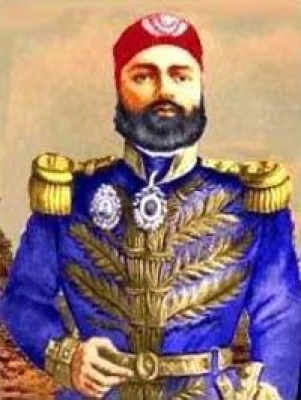
-webp.webp)
